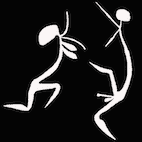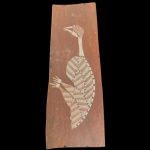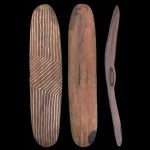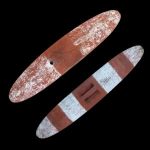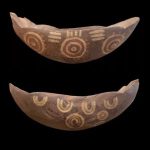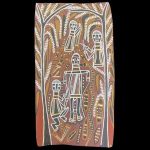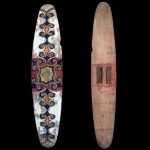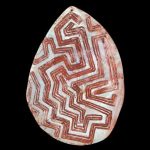Aboriginal Shield by Jarinyanu David Downs
Kimberley Art: Lovely Painted Aboriginal shield by David Jarinyanu Downs
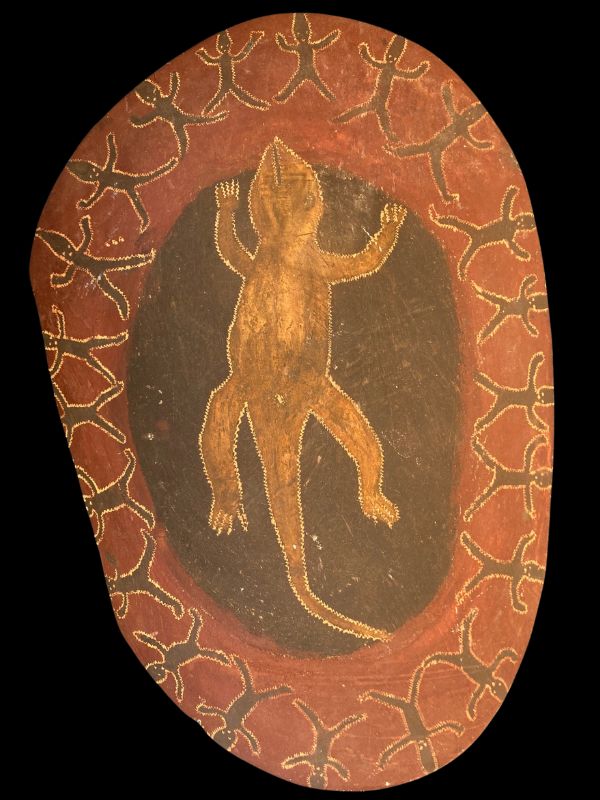
Object type: Aboriginal dance Shield
Locality: Fitzroy Crossing Kimberley
Artist: Jarinyanu David Downs
Circa: 1960’s – 1970’s
Length: 6o cm
Description:
This lovely eary David Downs shield is the same traditional design as the Shield in the National Gallery of Victoria.
It features a large totemic Lizard surrounded by dancers in ceremonial head dressed invocing the spirit of Kurtal the ancestral rain Maker. It does have loss to one side as shown in the images but it is an old break
Price: SOLD
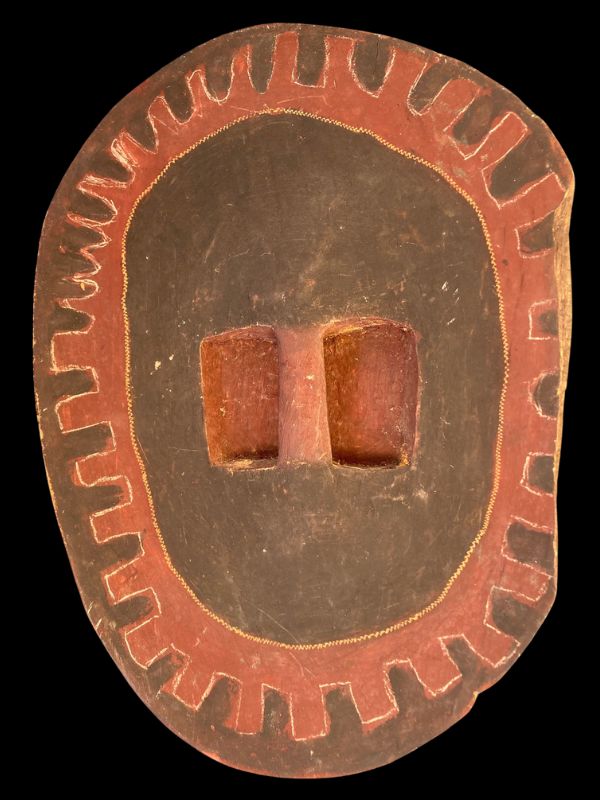
About the Artist
Jarinyanu David Downs (1925-1995): A Life in Art and Culture
Jarinyanu David Downs was born in the Great Sandy Desert, on Walmajarri land, in 1925. He spent most of his life in the Fitzroy Valley region, north of his traditional homelands. His artistic journey began in the 1980s, where he drew from his strong desert culture, blending it with the influences of his new home in the Kimberley. His work mirrors that of Rover Thomas, another artist who also migrated from desert lands to the Kimberley, leaving a lasting impact on Aboriginal art.
In the 1940s, Downs moved from his Walmajarri lands to the Fitzroy Valley cattle stations, a period that marked a large migration of desert peoples to settlements. Despite this change, the cultural traditions of the Walmajarri, Wangkajunga, and other desert groups continued to thrive in the Fitzroy Valley. Ceremonies and rituals remained integral to the community, connecting people to their heritage.
Early Work and Artistic Evolution
During the 1960s, Downs began creating art, initially decorating traditional artifacts such as boomerangs, shields, and coolamons. By 1980, he started painting on paper and canvas, using traditional ochres with natural resins. His early paintings often featured dark silhouettes against a white acrylic background, symbolizing his connection to both Christian and desert traditions.
As his career progressed, Downs developed a unique artistic style that reflected his Christian beliefs and his commitment to traditional law. He believed that by honoring God’s creation in line with local cultural practices, he could bridge the gap between Christianity and Aboriginal culture. This philosophy was most evident in his depiction of ancestral beings from the Ngarrangkani Dreaming, visualizing spirits that were once unseen.
Kurtal: The Ancestral Spirit
A key figure in Downs’ work was Kurtal, the ancestral rain man. Kurtal’s story—his travels, creation of water sources, and encounters with other rain spirits—became central to Downs’ art. Often depicted with ceremonial headdress and body markings, Kurtal symbolized the artist’s connection to both spiritual and cultural realms. The figure of Kurtal appeared frequently in his paintings, representing the ongoing relationship between the land, its people, and the ancestral spirits.
Artistic Legacy and Recognition
Jarinyanu David Downs was one of the first Aboriginal artists to gain individual representation. His works were exhibited in galleries such as Bonython-Meadmore and Roar 2 Studios, showcasing his unique fusion of Christian and traditional symbols. Downs was also featured in the prestigious Archibald Prize, where his portrait was painted and displayed. His successful career spanned sculpture, painting, and limited edition prints, making him one of the leading figures in contemporary Aboriginal art.
